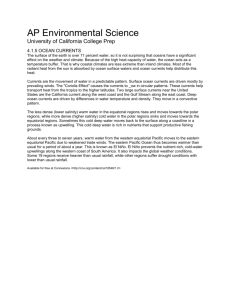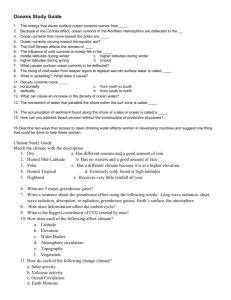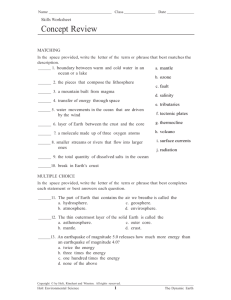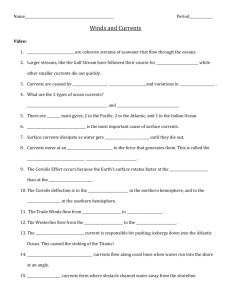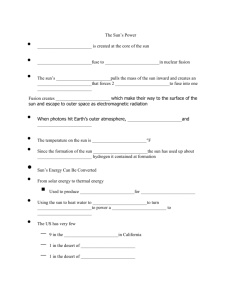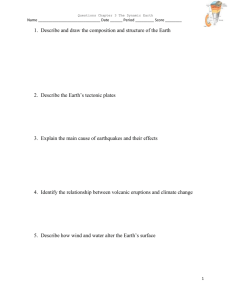The Importance of Ocean Currents
advertisement
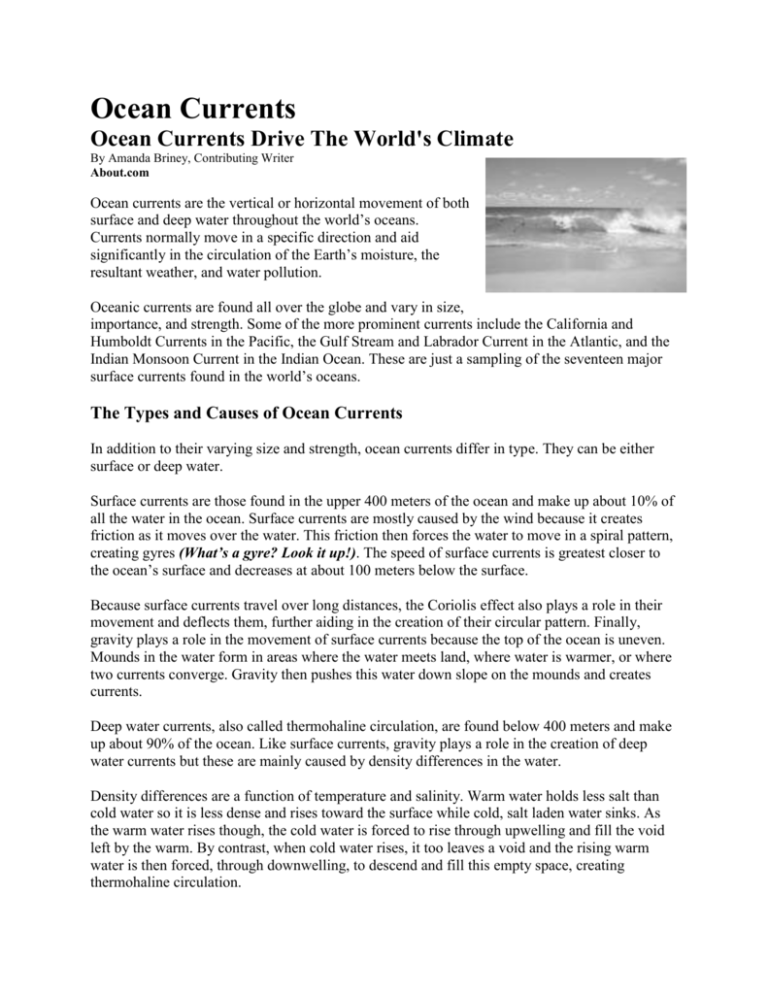
Ocean Currents Ocean Currents Drive The World's Climate By Amanda Briney, Contributing Writer About.com Ocean currents are the vertical or horizontal movement of both surface and deep water throughout the world’s oceans. Currents normally move in a specific direction and aid significantly in the circulation of the Earth’s moisture, the resultant weather, and water pollution. Oceanic currents are found all over the globe and vary in size, importance, and strength. Some of the more prominent currents include the California and Humboldt Currents in the Pacific, the Gulf Stream and Labrador Current in the Atlantic, and the Indian Monsoon Current in the Indian Ocean. These are just a sampling of the seventeen major surface currents found in the world’s oceans. The Types and Causes of Ocean Currents In addition to their varying size and strength, ocean currents differ in type. They can be either surface or deep water. Surface currents are those found in the upper 400 meters of the ocean and make up about 10% of all the water in the ocean. Surface currents are mostly caused by the wind because it creates friction as it moves over the water. This friction then forces the water to move in a spiral pattern, creating gyres (What’s a gyre? Look it up!). The speed of surface currents is greatest closer to the ocean’s surface and decreases at about 100 meters below the surface. Because surface currents travel over long distances, the Coriolis effect also plays a role in their movement and deflects them, further aiding in the creation of their circular pattern. Finally, gravity plays a role in the movement of surface currents because the top of the ocean is uneven. Mounds in the water form in areas where the water meets land, where water is warmer, or where two currents converge. Gravity then pushes this water down slope on the mounds and creates currents. Deep water currents, also called thermohaline circulation, are found below 400 meters and make up about 90% of the ocean. Like surface currents, gravity plays a role in the creation of deep water currents but these are mainly caused by density differences in the water. Density differences are a function of temperature and salinity. Warm water holds less salt than cold water so it is less dense and rises toward the surface while cold, salt laden water sinks. As the warm water rises though, the cold water is forced to rise through upwelling and fill the void left by the warm. By contrast, when cold water rises, it too leaves a void and the rising warm water is then forced, through downwelling, to descend and fill this empty space, creating thermohaline circulation. Thermohaline circulation is known as the Global Conveyor Belt because its circulation of warm and cold water acts as an underwater river and moves water throughout the ocean. Finally, seafloor topography and the shape of the ocean’s basins impact both surface and deep water currents as they restrict areas where water can move and "funnel" it into another. The Importance of Ocean Currents Because ocean currents circulate water worldwide, they have a significant impact on the movement of energy and moisture between the oceans and the atmosphere. As a result, they are important to the world’s weather. The Gulf Stream for example is a warm current that originates in the Gulf of Mexico and moves north toward Europe. Since it is full of warm water, the sea surface temperatures are warm, which keeps places like Europe warmer than other areas at similar latitudes. The Humboldt Current is another example of a current that affects weather. When this cold current is normally present off the coast of Chile and Peru, it creates extremely productive waters and keeps the coast cool and northern Chile arid. However, when it becomes disrupted, Chile’s climate is altered and it is believed that El Niño plays a role in its disturbance. Like the movement of energy and moisture, debris can also get trapped and moved around the world via currents. This can be man-made, which is significant to the formation of trash islands, or natural such as icebergs. The Labrador Current, which flows south out of the Arctic Ocean along the coasts of Newfoundland and Nova Scotia, is famous for moving icebergs into shipping lanes in the North Atlantic. Currents plan an important role in navigation as well. In addition to being able to avoid trash and icebergs, knowledge of currents is essential to the reduction of shipping costs and fuel consumption. Today, shipping companies and even sailing races often use currents to reduce time spent at sea. Finally, ocean currents are important to the distribution of the world’s sea life. Many species rely on currents to move them from one location to another whether it is for breeding or just simple movement over large areas. Ocean Currents as Alternative Energy Today, ocean currents are also gaining significance as a possible form of alternative energy. Because water is dense, it carries an enormous amount of energy that could possibly be captured and converted into a usable form through the use of water turbines. Currently this is an experimental technology being tested by the United States, Japan, China, and some European Union countries.


